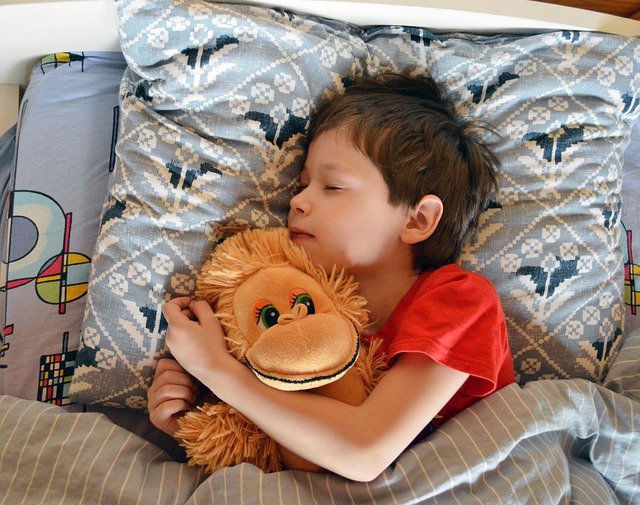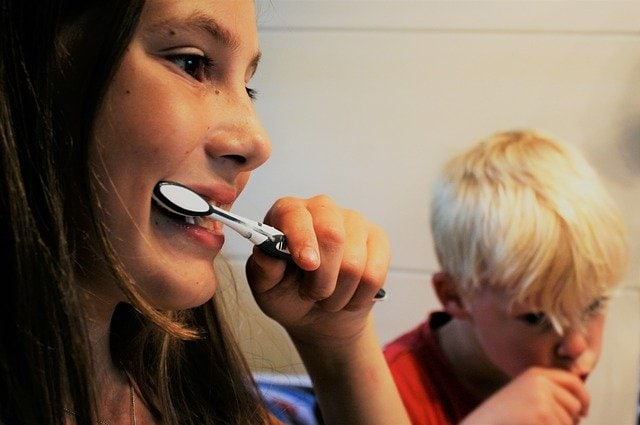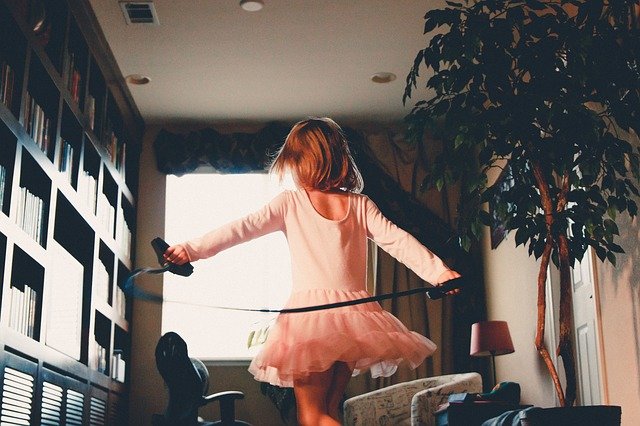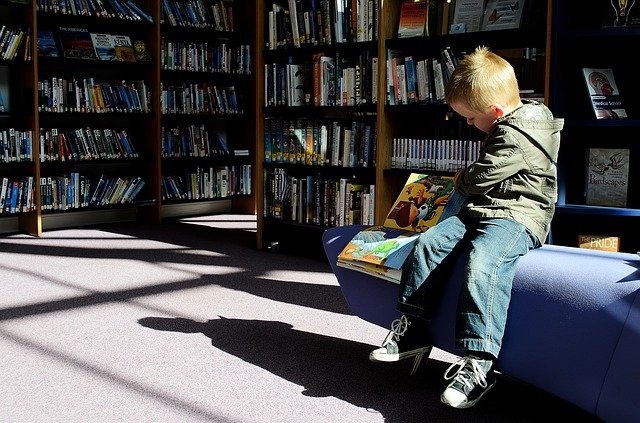Getting your kids through their bedtime routine can feel like a battle for some parents, but there are many ways to make it easier on your children and on you. And if you’re looking for bedtime solutions, then with us you’re already on the right track.

Hard to get your kids into bed? Practice sleep meditation and see the difference.
Health issues can play a big role in making children feel reluctant to go to bed. A toothache, sleep apnea, or other problems may be keeping your child awake. If your child has wet the bed recently, they might also be embarrassed or anxious about bedtime. Too much excitement during the day can keep your child overstimulated way past bedtime, as can too much screen time.
But if your child is healthy and does not tick any of the boxes above, there may be other reasons at play. If you have an older child who goes to bed later, the younger sibling may feel resentful about missing out on the exciting things that their sibling are doing. Alternatively growing child may be refusing to go to bed as an assertion of their independence.
Getting your kid through the 3 Bs – Bath, Brushing, and Bed – in some homes might feel like impossible. But meditation for children is a great way to ease your child into bedtime and set a routine that works for everyone.

How does meditation work?
Meditation for adults works just the same way as it does on children – it helps them feel calmer, grounded, and encourages relaxation. Kids receive a great deal of stimulation during the day and go through all kinds of feelings. Meditation classes work by giving you a chance to quiet your racing mind and will help children do the same. This also helps them process their emotions.
Evening meditation works by putting a child in the right frame of mind to fall asleep. It doesn’t always mean focusing on breathing or closing your eyes (which toddlers might find hard to do for too long), but it does involve slowing down the day and the mind. As your child does this with you, it creates an environment of warmth and comfort, enabling them to feel relaxed and drift off to a restful night sleep.

How to start meditating at home
There are many apps and aids to help your child wind down before bedtime allowing for a better approach to meditation. Some of the most popular are Headspace (age-specific meditation activities) and Spotify (playlists for bedtime music). If you prefer not to let your child use a device, you might choose to play the music or the story on Bluetooth speakers at bedtime.
Older children who are used to using devices at school or at home may enjoy the treat of using an app at bedtime. If you set limits and allocate a specific amount of time, a sleep meditation app might prove useful at helping settle them down for the night.
For toddlers, it is often interesting to “put each body part to sleep”. Gently touch your child’s foot and say goodnight to the foot. Follow this up to the head, eyes, neck, mouth, and mind.
For young kids, it might be nice to think about all their favourite people (friends, siblings, teachers, pets, soft toys) and say good night to all of them. Saying goodnight to the moon, bright stars, tall trees, fluffy clouds, swimming fish in the ocean, birds in the sky, and many more happy images can also work well.
A slow story (in which nothing exciting happens) is effective for almost any young child. You might choose to describe the day of a dolphin exploring the ocean, or a butterfly flitting from flower to flower to collect nectar.

4 ways to make sure sleep meditation is effective
What you do during meditation is not as important as getting the desired result. You need to slow your breathing, reduce distractions, and focus inward, so that you can feel tranquil and relaxed. An effective meditation session should do the same for your child. Here are 4 easy ways to help your children engage easier with their meditation.
1. Let them Choose to Do It
If you allow your child a choice in any activity you want them to do, it gives them a sense of control and involvement. Ask them leading questions that progress to the activity you want them to do, without offering a choice to not do it. For example: Would you like Mummy or Daddy to put you to bed? Would you like to hear a story about a cat or a rabbit tonight? Would you like to wear your red nightdress tonight or your blue jammies?
2. Create a Routine
Create a routine that is comfortable for you and your family. If possible, start bedtime routines earlier in the evening so you have both the patience and energy for them. This also has an added bonus of ensuring you’ll have plenty of time for yourself afterwards. Once you develop a routine, stick to it as much as possible. Children thrive when they know the routine they are expected to follow and will often remind you about it if you forget. Weaving a short session of mindfulness meditation into their pre-bedtime rituals helps get them in the frame of mind to sleep.
You’ll notice that your child will often drift off during their meditation practice, so its best that you do it after they’ve bathed, brushed, and are comfortable in bed.
3. Avoid High Energy Situations
If your child has a lot of energy to burn before bedtime, it will be almost impossible to get them to quiet down. Avoiding sugar, fast food, caffeinated soft drinks, physical games, and too much screen time can help bring them into the quieter mind frame of bedtime. You might even like to consult a nutritionist online to understand what to avoid in your child’s diet to help them get a better night of sleep.
4. Stay Calm
As you go through the rituals of bedtime meditation, ensure to maintain a low and soothing tone while focusing on rhythm and long pauses to lull your child to a gradual state of sleep and relaxation. It might take consistent effort on your end to inculcate this habit of a night time routine, but over time it is quite likely to result in better sleep meditation for your children.

The benefits of sleep meditation
Meditation has been shown to literally alter the structure and composition of brain matter. One Harvard university study reveals how two months of meditation is enough to boost grey matter. The benefits of meditation have always been endorsed by Eastern cultures and now, with scientific backing, they are gaining credibility in the Western world as well.
These same benefits can be seen through children meditation as well. Children meditation is known to bring about the following benefits:
- Improved awareness and attention span
- Higher levels of self-regulation and self-awareness
- Improved mental and emotional health
- Higher levels of empathy
- Improved immunity and resilience
- Reduced levels of stress and anxiety
- Better quality and quantity of sleep
- Higher levels of creativity

3 Mobile apps for Sleep Meditation for Kids
It might seem wrong to use mobile applications for kids bedtime meditation but it does have tremendous potential as long as you control the use of the device and ensure that your child understands what they are using it for.
Here is how 3 of the best mobile applications for sleep meditation in Australia work:
Breathe, Think, Do with Sesame:
Sesame Street’s mobile app makes children go through five scenarios where they help monsters solve problems and learn to relax. In calming down the monsters through deep breathing exercises, your kid inadvertently learns the basics of meditation. This is ideal for 2-5 years old and is a free app.
Smiling Mind:
Developed by a team of mindfulness psychologists this mobile app uses an Australian accent in short bite-sized guided meditation sessions. Each session is short, bearing in mind the limited attention spans of children, and ensures successful sleep meditation. It is ideal for kids of all ages and is free on the App Store.
Headspace for Kids:
The brainchild of Andy Puddicombe, a Buddhist monk turned meditation expert and pioneer. The kids’ version of Headspace is available through adult subscription. The meditation sessions are arranged by age and range from short 1-minute meditations to 9-minute sessions. They make sleep meditation fun and easy. Note that this is a paid app.



